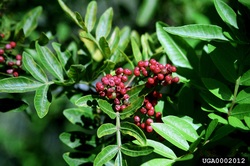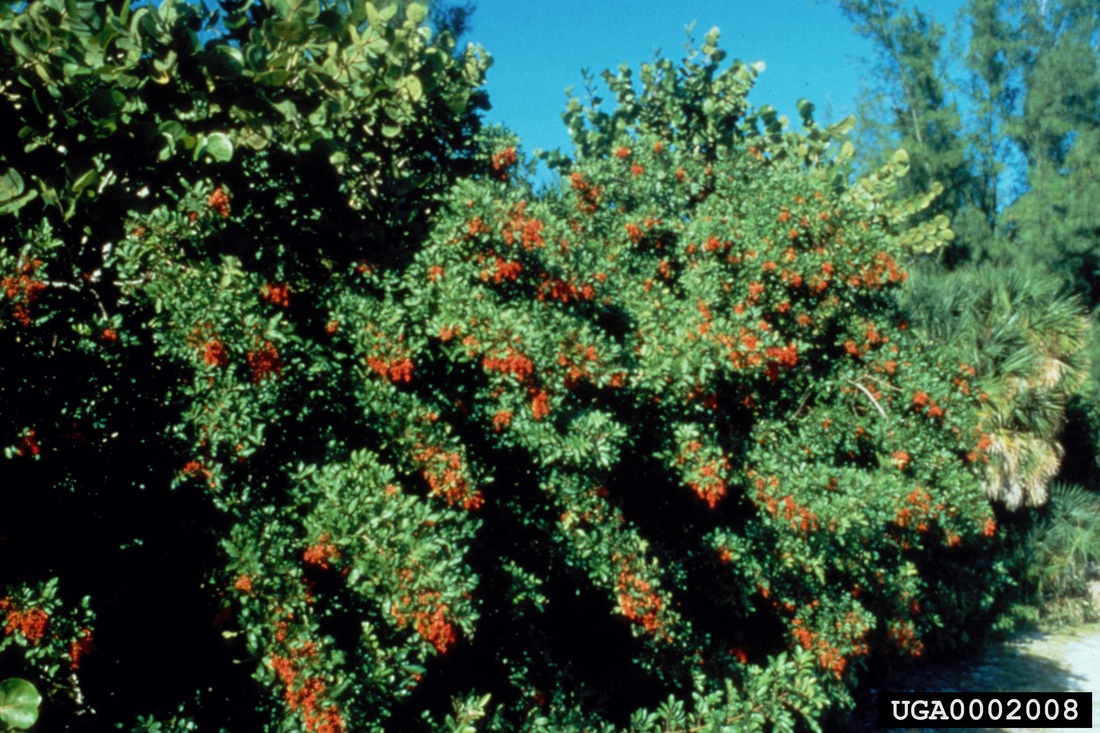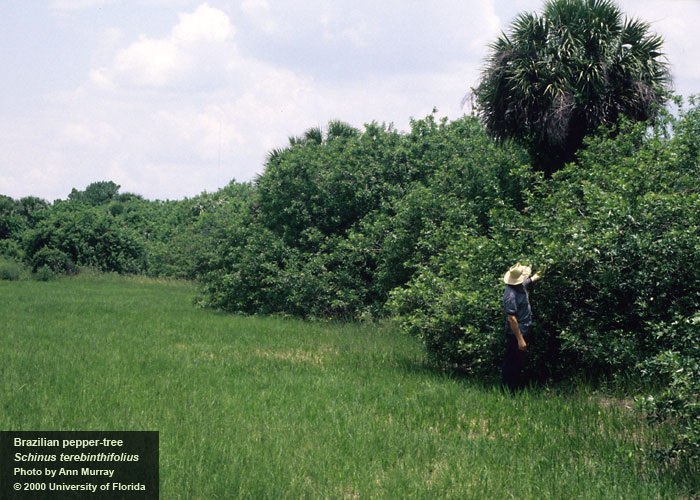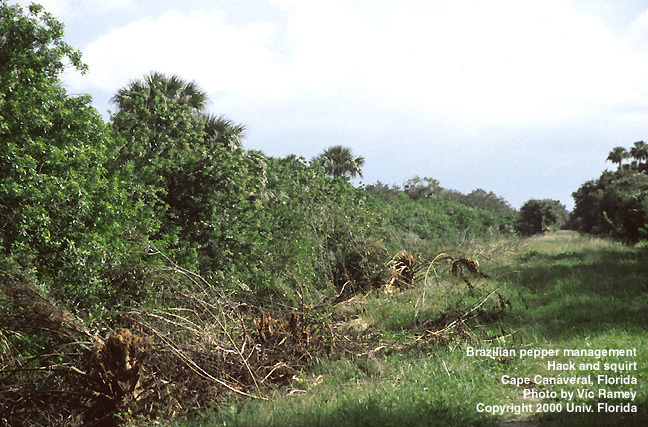Land & Trees
Helpful hints on land, yard, tree management. Send helpful information to the webmaster through the Contact Us form. Share your knowledge with the rest of us.
|
Those pesky pepper trees
Pepper Trees in full bloom.
Brazillian pepper trees were brought to this state in the 1890's and advocated for use as ornamental shrubs. People loved them and called them Florida holly. Now they dominate 700,000 acres from North Central to South Florida. Brazilian peppers cover more land in Florida than the infamous melaleuca which has wreaked havoc in the Everglades.
Floridians spend money to reclaim wetlands, pasture lands, fish-spawning waterfronts, nature preserves and residential property from Brazilian peppers. But the more these plants grow and spread, the bigger the problem and the more tax money it will eat up. Brazilian peppers are on the State of Florida's prohibited plant list. It is illegal to cultivate, sell or transport them. When these large shrubs or trees infest an area, they advance like armies, overwhelming everything in their paths. They disrupt the interdependence of plants and animals crucial to their survival. Only the "invader" survives. Native plants and animals disappear. Ill Effects of Brazilian Peppers
How Brazilian Peppers Grow
How To Identify Brazilian Peppers
How you can help
return to top Δ |
Herbacide for Brazilian Pepper Trees

Maureen Bonness (her email) sends the following advice for getting rid of pepper trees. Garlon 4 or Element 4 (active ingredient is triclopyr ester) diluted in Impel Red. Diesel will also work, but its not so good for the environment. I use 8% Garlon 4. I buy herbicide at Helena Chem. in Immokalee. Dan says there is a cheaper place in Immokalee that sells the ag chemicals. I buy Garlon in 2.5 gallon jugs, and the Impel Red is sold in 12-gallon drums. Not sure what your option is for smaller amounts. Some home improvement stores (or Naples Fertilizer?) might sell tripclopyr-containing herbicides. One is called Brush-Killer, or Brush-be-gone; check the label for ingredients. If you use those, do NOT dilute it. It is already at 8%.
How to treat: spray chemical at base of trunk (or you can spray a stump but it is the outer bark that is important). Spray enough so that it starts dripping down the side. Do not spray if rain is expected within an hour. Do not spray over surface water (e.g. a ditch or low wetland with water). Do not spray on wet wood. There are special chemical-resistant spray bottles. They are grey; more expensive but will not get corroded by chemicals. All spray bottles leak -- wear gloves. If you prefer to cut the tops off the pepper shrubs, it is easier to do before the shrub is dead. Dead pepper branches are very hard for 2 years; thereafter they become brittle and decay rapidly. |



